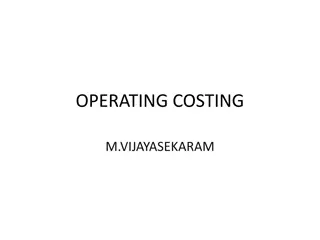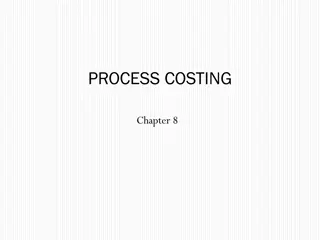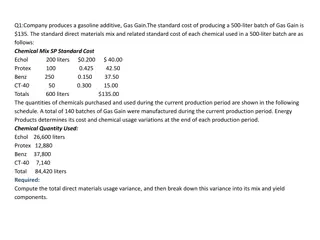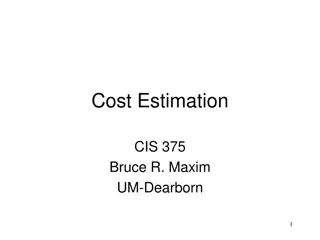Understanding Different Types of Specifications in Estimation and Costing
In the field of estimation and costing, four main methods of specifying are used: Descriptive, Performance, Reference Standard, and Proprietary. Descriptive specifications provide detailed descriptions without using proprietary names, allowing for tight control over specified work. Performance specifications focus on end results and verification criteria. Each method has its advantages and disadvantages, impacting factors such as competition, space usage, and time consumption.
Download Presentation

Please find below an Image/Link to download the presentation.
The content on the website is provided AS IS for your information and personal use only. It may not be sold, licensed, or shared on other websites without obtaining consent from the author. Download presentation by click this link. If you encounter any issues during the download, it is possible that the publisher has removed the file from their server.
E N D
Presentation Transcript
Subject: Estimation and Costing Topic: Types of specification Presented by:Prof. Balraj Marjara
Types of Specifications There are four methods of specifying. There is no defined rule for using one method over another or about combining methods, but care should be taken to avoid redundancy or contradictions. The four methods are: Descriptive Performance Reference Standard Proprietary
Descriptive Specifications Under this method of specifying the exact properties of the materials and methods of installation are described in detail without using proprietary or manufacturer's names. Descriptive specifications are commonly used for products for which no standards exist, on projects where using proprietary names is restricted, and in situations where the Architect/Engineer want to exercise tight control over the specified work.
There are five steps for preparing descriptive specifications: 1. Research available products 2. Research the important features required for the product. 3. Determine which features to describe in the specification and which features to show in the drawings. 4. Describe the important features. 5. Specify quality assurance measures (i.e. submittals, certifications, testing or inspection activities)
Advantages to using descriptive specifications Descriptive specifications specify exactly what the design intends. They are applicable to all conditions, methods or situations of a project. They are applicable to all sizes and types of projects. They permit free competition because they do not restrict the use of specific products or manufacturers. Disadvantages of descriptive specifications: They require the specifier to take special care in describing the design intent in order to achieve the desired results.
Descriptive specifications tend to take up more space because they require more verbiage than other methods. They may be more time consuming than other methods to create and write. They are being used less often as more complete reference standards are being developed and implemented.
Performance Specifications Under this method the required end results are specified along with the criteria by which the performance will be judged and the method by which it can be verified. The contractor is free to choose the materials and methods that comply with the performance specification. They are generally used to encourage the use of new and innovative techniques that may lead to more economical construction. They are also used to supplement other specification methods.
Advantages to using performance specifications: Only the end result or design intent is specified, this gives the Contractor flexibility in selecting and applying products. They permit free competition. They can be applicable in all types and sizes of projects. Performance specifications delegate the technical responsibilities to the construction industry, where the Contractor instead of the Architecture/Engineering firm is responsible for the results.
Disadvantages to using performance specifications: They can be time consuming to produce and may result in long, detailed specifications. They are more difficult to enforce than other methods of specifying. They may be too elaborate for simple or minor projects. Performance specifications delegate the technical responsibilities to the construction industry, where the Contractor instead of the Architecture/Engineering firm is responsible for the results. (This is both an advantage and disadvantage)























